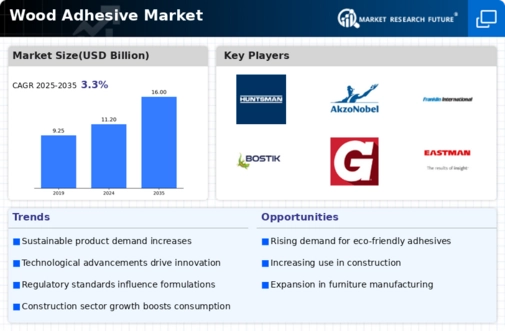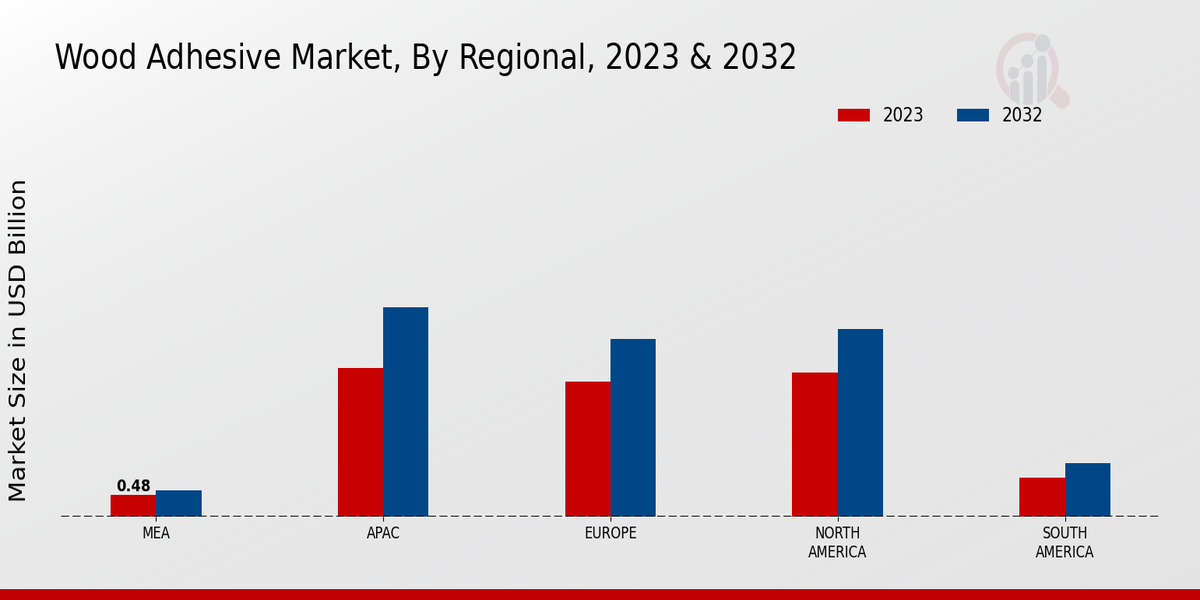Market Growth Projections
Growth of the Furniture Industry
The Global Wood Adhesive Market Industry is significantly influenced by the growth of the furniture sector. With a projected market value of 16.0 USD Billion by 2035, the demand for wood adhesives is expected to rise in tandem with furniture production. The increasing consumer preference for customized and high-quality wooden furniture drives manufacturers to seek reliable adhesive solutions. Additionally, the trend towards modular and flat-pack furniture further necessitates the use of effective wood adhesives. As furniture manufacturers prioritize durability and aesthetics, the Global Wood Adhesive Market Industry stands to gain from this burgeoning demand, reinforcing its position in the market.
Rising Demand in Construction Sector
The Global Wood Adhesive Market Industry experiences a notable surge in demand driven by the expanding construction sector. As urbanization accelerates, the need for wooden structures, furniture, and cabinetry increases. This trend is reflected in the projected market value of 11.2 USD Billion in 2024, indicating a robust growth trajectory. The construction industry increasingly favors wood as a sustainable material, further propelling the use of wood adhesives. The shift towards eco-friendly building practices aligns with the growing consumer preference for sustainable products, thereby enhancing the market's potential. Consequently, the Global Wood Adhesive Market Industry is poised to benefit significantly from this construction boom.
Market Expansion in Emerging Economies
Emerging economies present a significant opportunity for the Global Wood Adhesive Market Industry. Rapid industrialization and urban development in regions such as Asia-Pacific and Latin America are driving the demand for wood adhesives. As these economies continue to grow, the construction and furniture sectors are expanding, leading to increased consumption of wood adhesives. The potential for market growth is underscored by the projected CAGR of 3.28% from 2025 to 2035. This growth trajectory suggests that as emerging markets develop, they will increasingly rely on wood adhesives, thereby enhancing the overall market landscape.
Regulatory Support for Sustainable Practices
Regulatory frameworks promoting sustainable practices are increasingly shaping the Global Wood Adhesive Market Industry. Governments worldwide are implementing stringent regulations aimed at reducing the environmental impact of manufacturing processes. This regulatory support encourages the adoption of eco-friendly wood adhesives, which are less harmful to both human health and the environment. As manufacturers comply with these regulations, they are likely to invest in developing sustainable adhesive solutions. This shift not only aligns with global sustainability goals but also enhances the market's growth prospects. The Global Wood Adhesive Market Industry is thus positioned to thrive in an environment that prioritizes sustainability.
Technological Advancements in Adhesive Formulations
Technological innovations play a pivotal role in shaping the Global Wood Adhesive Market Industry. The development of advanced adhesive formulations, including water-based and bio-based adhesives, caters to the increasing demand for environmentally friendly products. These innovations not only enhance performance but also reduce harmful emissions associated with traditional adhesives. Manufacturers are investing in research and development to create adhesives that offer superior bonding strength and durability. Such advancements are likely to attract a broader customer base, including industries focused on sustainability. As a result, the Global Wood Adhesive Market Industry is expected to witness substantial growth, driven by these technological enhancements.













